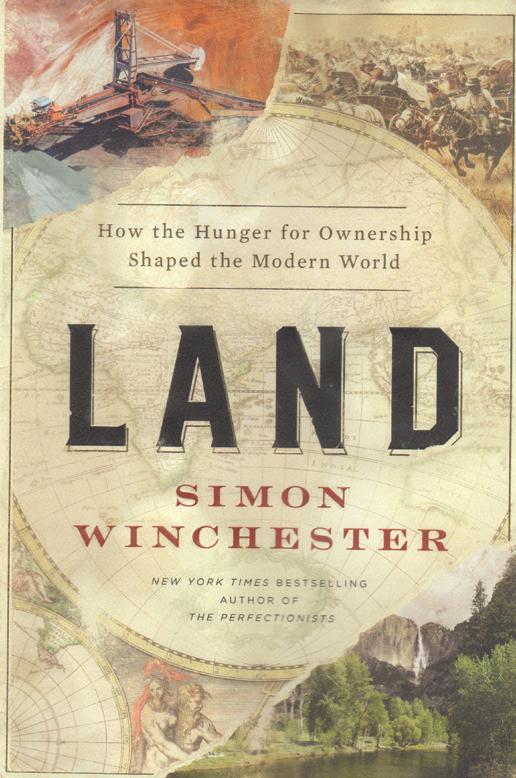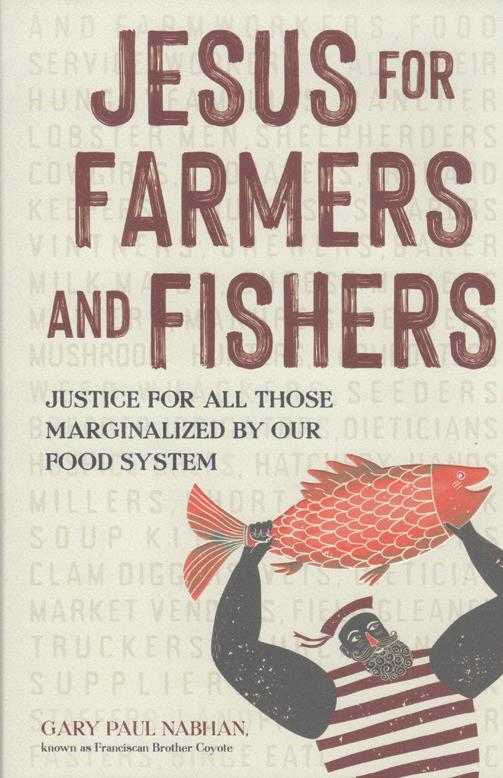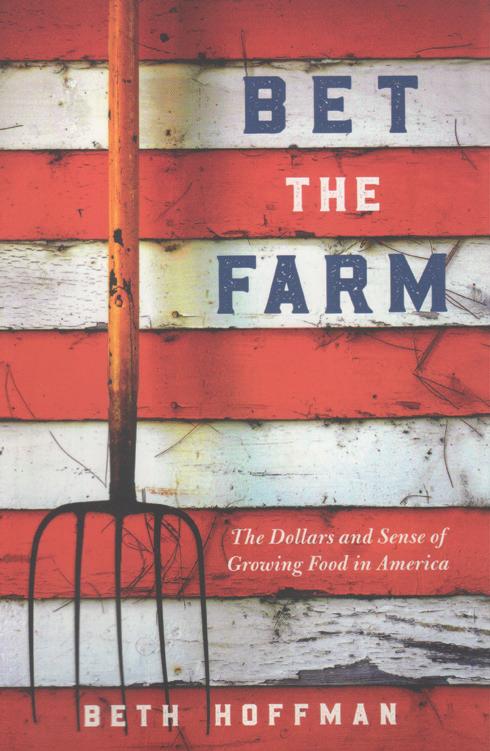
12 minute read
Seeking Farmers-Seeking Land Clearinghouse
Are you a beginning farmer looking to rent or purchase farmland in the Midwest? Or are you an established farmer/landowner in the Midwest who is seeking a beginning farmer to purchase or rent your land, or to work with in a partnership/employee situation? Then consider having your information circulated via the Land Stewardship Project’s Seeking Farmers-Seeking Land Clearinghouse. To fill out an online form and for more information, see landstewardshipproject.org/farmland-clearinghouse. You can also obtain forms by e-mailing LSP’s Karen Stettler at stettler@landstewardshipproject.org, or by calling her at 612-767-9885. Below are a few recent listings. For the latest listings, see landstewardshipproject.org/farmland-clearinghouse.
Farmland Available
Advertisement
u Jessica Chamblin has 3 acres (2 pastured) available to buy in Wisconsin’s Pierce County, near Bay City. There are two fenced poultry pastures, two fenced goat/alpaca pastures, 22 raised garden beds, beehives, a new vineyard, and a new fruit orchard. There is a berm house that is all on one level, plus an oversized two-car garage. The asking price is $295,000. Contact: Jessica Chamblin, jnj021918@gmail.com.
u Bill Hjort is looking for a farmer to buy roughly 100 acres (65 tillable) in eastcentral Minnesota’s Isanti County. There is a large pole shed with electricity and the house has three bedrooms. At least 9 tillable acres have been fallow for over 20 years, so it would be eligible for organic production. The asking price is $1 million. Contact: Bill Hjort, 320-267-2105.
u Allison Teeney is looking for a farmer to rent her 8-acre farm (5 tillable, 2 forest, 1 other) near Canton, in Minnesota’s Fillmore County. The land has not been sprayed. Teeney is willing to discuss ideas or options a renter may be considering. There is an old pole barn (that needs major work) but no house. Contact: Allison Teeney, therarestfarmer@gmail.com.
u Farm Beginnings graduates are looking to sell a 17-acre farm set up for vegetable production and with basic grazing infrastructure near Stockholm Wis., and Lake Pepin The property has a solar array and an open garage outbuilding with poured concrete floor used as a pack shed. There are hoop houses and other farm equipment they would like to sell with the property. There is a house with satellite internet. Contact: Sammie Ardito Rivera, sinfronterastc@gmail.com. u Ed Lysne has 8 acres of land for sale, including a house and small detached garage, near Northfield, Minn. Five acres are tillable and 3 acres are pasture. Contact: Ed Lysne, 612-790-7873, edriclysne@gmail.com. u Timothy Burdick is seeking a buyer for his 46-acre farm (forest, pasture, and tillable) in Big Stone County, near Ortonville, Minn. The land has mostly been used for pasture for cattle and horses; however, 1-2 acres tillable would be available for gardening. Burdick would consider selling the entire 46 acres or selling 10 acres and the buildings. The land has not been sprayed. Contact: Timothy Burdick, 320-808-0175, kburdic@gmail.com.
Seeking Farmland
u Matthew Schadt is seeking farmland to rent in Wisconsin. No housing is necessary but grain bins or sheds in good condition would be beneficial. Contact: Matthew Schadt, 920285-8593, schadtmatthew@gmail.com.
u A young couple is looking for a farmer interested in transitioning their farm to the next generation. They are interested in most types of farming and would ideally like to find something in southeastern Minnesota or western Wisconsin. They come from farming backgrounds and currently rent 60 acres and rotationally graze beef cows. Contact: Ernie Weissing, 507-993-5873, norseman870@ gmail.com.
u Carly McAndrews is seeking 10-40 acres
Resources for Retiring & Beginning Farmers
Afarm is a deeply personal thing. It is a home, a b usiness, a living ecosystem, a way of life. It can also be an investment in the future of agriculture. When family members develop a farm transition plan, they can shape the values and stewardship that will be carried out on that land, and potentially give new farmers an opportunity to get started.
The Land Stewardship Project has various tools and support available to help beginning farmers, as well as retiring farmers and non-operating landowners, navigate the transition of land and other agricultural resources to the next generation.
For details on publications, workshops, tax credits, and other Land Stewardship Project transition resources, see landstewardshipproject.org/ land-transition-tools, or contact LSP’s Karen Stettler at stettler@ landstewardshipproject.org, 612-767-9480. p of certified organic farmland in Iowa. If there is not a house already, there would need to be a place to build one. Contact: Carly McAndrews, 203-668-1278, trowelanderrorfarm@gmail.com. u Kevin Sauer is seeking 60 acres of land in Iowa. He would like 8 tillable acres, 12 pastured acres, and 40 forested acres. An equipment barn would be a plus, but a house is not needed. Contact: Kevin Sauer, 501-952-3735, loveyourneighborfarm@ gmail.com. u Jessica Davis is seeking pastureland and a house to rent in Iowa. Contact: Jessica Davis, 661-917-8902, jessicabasham188@ gmail.com. u Taylor Olsen is seeking pastured, tillable, and forested land to buy in Minnesota. No housing is required. Contact: Taylor Olsen, 801-696-8390, taylor.olsen19@ gmail.com.
Seeking Farmer
u Emily Macdonald wants to transfer her farmland, infrastructure, and equipment to next-generation farmers who share her stewardship values. This would be through a lease-to-own or other long-term arrangement. She has an 80-acre farm in Berrien County, Mich. The farm consists of 27 tillable, 14 pasture, 18 woodland, 10 wetland, and 11 additional acres. There is a barn and a farm store with freezers. There is fencing and a livestock watering system. Housing is not available. Contact: Emily Macdonald, 269697-0063, greenfieldgrazing@gmail.com.
Conservation Leases Toolkit
The Land Stewardship Project’s “Co nservation Leases Toolkit” includes fact sheets, sample leases, and other resources for farmers as well as non-operating landowners who are interested in developing rental arrangements that build soil and ensure stewardship of the land in the long-term.
Check it out at landstewardshipproject. org/conservation-leases or contact LSP’s Robin Moore at rmoore@landstewardshipproject.org, 320-269-2105.
Land
How the Quest for Ownership Shaped the Modern World
By Simon Winchester
446 pages
HarperCollins Publishers harpercollins.com
Bet the Farm
The Dollars and Sense of Growing Food in America
By Beth Hoffman
are economically and ecologically sustainable, as well as good places to live.
Taken together, these books provide insights into how we’re long overdue to reshape our relationship with the land — not only how we treat it and what we expect from it, but how we see ownership itself.
Winchester begins at, well, the beginning. The idea of land that’s something that should be owned is inseparable from the concept of “settled agriculture” — raising our food in one place rather than wandering the landscape as hunter-gatherers. By around 4,000 years ago, for many humans the landscape became no longer simply a place to traverse — it was a stable location to live and work on for years, even generations.
has purchased land in New England because of his own self-proclaimed desire to be rooted in one place. He’s been a resident of the U.S. long enough to have good insights into not only how this country’s economy was built on stealing land from Indigenous tribes, but how such a model of nation building is nothing new. The story of how New Zealand’s Maori farmers were robbed of their land rights and denied development grants given freely to their white counterparts will resonate with anyone familiar with how BIPOC farmers have been discriminated against repeatedly in this country.
259
pages Island Press
islandpress.org/books/bet-farm
Reviewed

by
Brian DeVore
I’m not sure I’d recommend this, but I recently read two books back-toback that represent extreme ends of the spectrum when it comes to the issue of land, that most critical of agricultural resources. First, I ploughed through Simon Winchester’s impressively thorough Land: How the Hunger for Ownership Shaped the Modern World. The title says it all: this is a comprehensive look at how land — our desire to own it, control it, and manipulate it — has set human history on a certain course, not all of it good. Decisions made and models developed decades or even centuries ago are having dire economic, ecological, and social repercussions today. That’s the macro side of the land picture.
After making my way through all 446 pages of Winchester’s tome, I went for a
“And with this…so came the start of the demarcation of land. The establishment of its boundaries. And the realization of the importance of knowing its boundaries. And the realization of the importance of knowing how one man’s land is made identifiably separate from another,” writes Winchester.
Just as the invention of railroad schedules suddenly made the concept of time important, farms and placing boundaries around them helped make ownership the powerful force it is today. As Winchester documents, land ownership drives economics, politics, family relations, race relations, even how communities are developed.
“We can move ahead only by creating a new future, not by replicating a nonexistent path.”
— Beth Hoffman
more granular examination of land and its impact on people and the communities they live in. Beth Hoffman’s Bet the Farm: The Dollars and Sense of Growing Food in America, tells the story of how one family’s efforts to be rooted in Iowa soil helps explain the challenges American farmers in general face in developing operations that
After a prologue that ties the birth of agriculture to the birth of land ownership, Winchester, a globetrotting journalist who clearly enjoys introducing readers to far corners of the planet, spends the rest of the book creating a travelogue of sorts, one that jumps around from Scotland and New Zealand to India and Zimbabwe. Each country profile is meant to convey our complicated relationship with terra firma and how it impacts society today. Reading the author’s deep history of Israel and Palestine and the role land plays in their fraught relationship is particularly relevant at a time when war wages in that part of the world. Spoiler alert: boundaries created by bureaucrats long ago are at the heart of that very complicated conflict.
Winchester is British by birth, but he
Winchester reports on examples of nations, communities, and individuals attempting to fix our dysfunctional relationship with land. On the country-level, places like New Zealand are attempting to make things right with people who were forced off their homelands in previous times. On the community level, Winchester describes the use of land trusts to put ownership in the hands of the many. On an individual level, the author touches on how wealthy landowners in England are “rewilding” their estates by allowing natural habitat to take hold and thrive. These are interesting stories, but leave one with a sense of disparate activities going on across the globe, with no overall ethic steeped in ecological or economic justice binding them together. That’s too bad, because the stakes are being raised. Toward the end of his book, Winchester describes how the assumption that “land is the only thing on this earth that lasts” is no longer true; climate change and pollution are altering that assumption at an alarming rate. Will land’s vulnerability to being lost, and the impact that will have on everything from food production to people’s quality-of-life, alter our relationship with it?
There’s little doubt Beth Hoffman’s relationship to the land has been altered over the past few years. When, in 2019, she moved from San Francisco to a 530-acre farm in south-central Iowa, she was seeking a connection to the soil she had never had growing up in New Jersey. Bet the Farm is an entertaining and thoughtprovoking look at one family’s struggle to make that connection economically and ecologically viable, as well as something that is sustainable from a quality-of-life
Land, see page 33…
…Land, from page 32 point of view.
Like many people, Hoffman came to be on the land through a family connection — her husband, John, grew up on that farm and it’s been in the Hogeland family for five generations. From the outset, Hoffman admits that as a journalist who had written about agriculture extensively, she thought she knew a lot about farming. She didn’t, and so she brings an outsider’s point of view to the day-to-day machinations of running an agricultural business.
Beth and John are dedicated to converting this mostly conventional farm into a regenerative operation that produces grassbased livestock and consists of diversified cropping systems. In short, they want to heal the land while being good members of the community. But this is no romanticized story of city slickers coming to rural America and falling in love with the sights, smells, and earthy people while a Netflix film crew follows them around. Hoffman intersperses passages on how she and John grapple with nuts-and-bolts tasks such as converting row cropped land to rotationally grazed pasture with in-depth, journalistic analyses of how farm policy and economic forces make it so difficult to do things like convert row cropped land to rotationally grazed pasture.
As I dived deeper into the book, I found myself appreciating Hoffman’s ability to balance just how excited she and John were to be starting their own farm with the realities of the situation.
“Our farm would become an ecological
Jesus for Farmers and Fishers Justice for All Those Marginalized by Our Food System

By Gary Paul Nabhan
204 pages
Broadleaf Books garynabhan.com/books
Reviewed by Dale Hadler
Drawing on his experience as an ethnobotanist, local food advocate, Franciscan Ecumenical Brother, and Arab-American, Gary Paul Nabhan argues that Jesus was a strong advocate for the agrarian people of first century Roman Palestine, and by extension, would be right at home advocating for the people who work in our modern food system.
The author accomplishes this by retelling the parables and stories of Jesus’s life, nirvana with many different enterprises all working together but owned separately, creating jobs for many people along the way,” Hoffman writes at one point. She follows up with, “The vision was ridiculously idealistic…right now there were more urgent things to attend to than our fantasies of an ecologically and ethnically diverse farm, the end of racism in agriculture, and questions about the semantics of the term ‘family farm.’ ”
In many ways, Hoffman is less of a romantic about farming than her husband. This clear-eyed vision is particularly useful as the couple struggles with transitioning the farm from John’s father, Leroy. As with many transitions within families, this one was hampered by the fear of change and good old-fashioned parent-child dynamics. They finally had a breakthrough when Beth, John, his sister Andrea, and Leroy met with Dave Baker at the Beginning Farmer Center in Ames, Iowa. Hoffman had learned of the Center as a journalist, and it turned out that meeting was the perfect way to get over the barrier the two generations were up against. Just as the Land Stewardship Project has discovered through our farm transitions work (see page 29), having a third (neutral) party enter the planning process can be invaluable.
I would recommend that anyone interested in farming —whether they are “returning” to family land or are a complete emphasizing the social justice message of these accounts, especially as they relate to the “farmers and fishers” of his day. Like food and farm workers of today, their ancient counterparts faced dangerous working conditions, economic marginalization, and discrimination.
Nabhan proposes that those farmers and fishers were subjected to “colonial forces” that are much like the forces impacting today’s “essential workers.” The dominant forces of ancient times may have been religious and imperial in nature, and today’s forces may be corporate, but in both cases the people in control benefit from the dangers those working the land and waters are exposed to.
After all, when Jesus tossed the “money changers” out of the temple, he wasn’t enraged at the merchants making money newbie to agriculture — read this book. It’s far from a step-by-step guide on how to be a successful, regenerative producer of food. Many of the questions — big and small — that Hoffman asks remain unanswered by the end of the final chapter. However, it’s worth the read because of the questions she asks, such as, if regenerative farming is so good for society and the planet, why do regenerative farmers face so many more economic and policy-based challenges when compared to their conventional counterparts?

The book is also worthwhile for a message that’s threaded throughout, one that Hoffman sums up towards the end when she makes it clear many of us live under a delusion that there was a “time before” when all farmers grew healthy food, were self-reliant, and lived “simple, happy lives.”
“We can move ahead only by creating a new future, not by replicating a nonexistent path,” she writes.
Read Simon Winchester’s book if you want a deep look at our historical relationship to land and agriculture. Check out Beth Hoffman’s writing if you want a glimpse at what questions need answered if we are to escape that past. p
Brian DeVore is the editor of the Land Stewardship Letter that day, but at the larger powers who profited most from the toil of others.
The author says studying Jesus’s parables isn’t just a way to “soothe” and “placate” people about the problems they face.
“Rather than merely raging against the machine, Jesus offered game-changing principles that he sensed could avert further conflict and help people retain their dignity,” writes Nabhan, adding, “He focused more upon strengthening a sense of justice, dignity, hope, and resilience through stories that continue to have staying power centuries after they were first told.” p
LSP member Dale Hadler lives in Winona, Minn.








